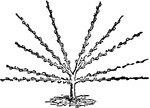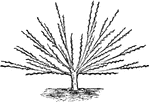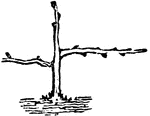Clipart tagged: ‘pruning’

Currant Bush
Illustrated is the pruning of a currant bush, The old cane, (a), is to be cut away. Then the straight…
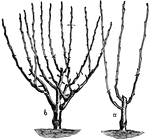
Dwarf-Tree Pruning
"This image gives a good idea of how these drawf trees are to be manipulated, a showing the first year's…
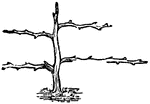
Horizontal Shaped Pruning
"Pruning for Horizontally-Trained Tree, Third Year." — Encyclopedia Britannica, 1893
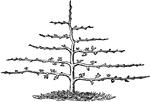
Horizontal Shaped Pruning
"Pruning for Horizontally-Trained Tree, Fifth Year." — Encyclopedia Britannica, 1893
!["By the time [olive trees] are well grown the form of the young tree is established, and further pruning for form may be done in a general manner to obtain the following results: (1) Maintenance of a comparatively open center to the tree; (2) exposure to the sun and air as large a number as possible of last year's branches around the circumference of the tree; (3) removal of all ground suckers and water sprouts; (4) preservation of outward-growing and drooping basal and lateral fruit branches; (5) heading back of upward-growing limbs, which consume much, but produce little; and, (6) the removal of all diseased or injured wood. In pruning for form the rules governing pruning for fruit should be kept in mind."—Government Printing Office, 1897](https://etc.usf.edu/clipart/78900/78990/78990_olivetree_mth.gif)
An Olive Tree
"By the time [olive trees] are well grown the form of the young tree is established, and further pruning…

Pelargoniums
"Some plants, like pelargoniums, can only be kept handsomely formed and well furnished by cutting them…

When to Prune
"If the plants are too tall or spindling, and you wish to have them dwarf and bushy, cut off the crown…
Pruning
"The nature of the cut itself in pruning is of more consequence, especially in the case of fruit trees,…

Pruning
"The nature of the cut itself in pruning is of more consequence, especially in the case of fruit trees,…
Pruning
"The nature of the cut itself in pruning is of more consequence, especially in the case of fruit trees,…
Pruning
"The nature of the cut itself in pruning is of more consequence, especially in the case of fruit trees,…
Pruning
"The nature of the cut itself in pruning is of more consequence, especially in the case of fruit trees,…
Pruning
"The nature of the cut itself in pruning is of more consequence, especially in the case of fruit trees,…
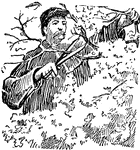
Pruning
Pruning in landscaping and gardening is the practice of removing diseased, non-productive, or otherwise…

Pruning Shears
The florist and gardener use scissors with a curved blade for pruning, and a delicate pair for gathering…

Pyramid Pruning
"a shows a young tree with its second year's growth, the upright shoot of the maiden tree having been…
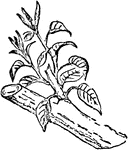
Summer Pruning
"Summer Pruning should be performed while the shoots are yet young and succulent, so that they may be…
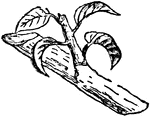
Summer Pruning
"Summer Pruning should be performed while the shoots are yet young and succulent, so that they may be…



